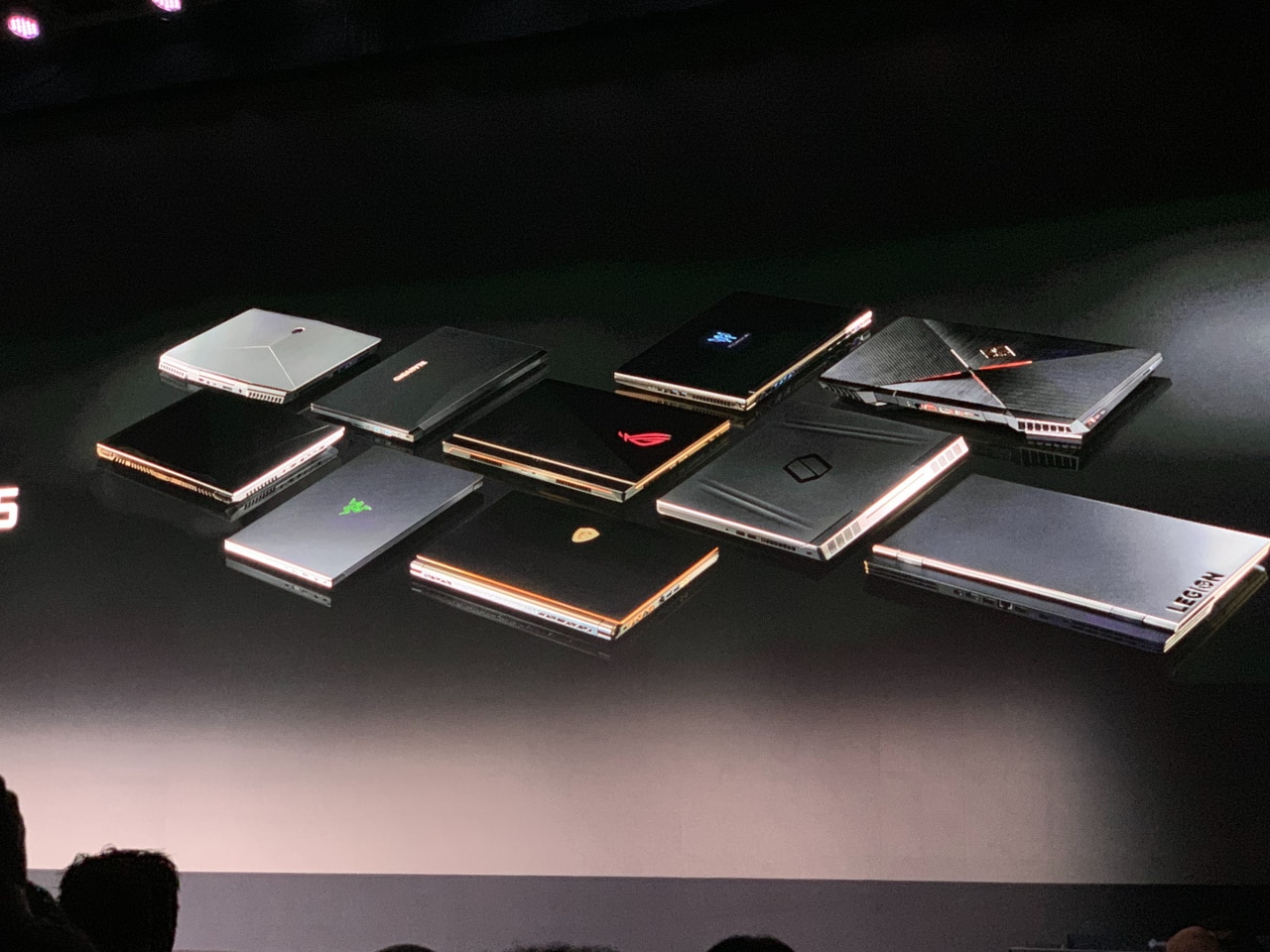As usual, Nvidia is among the first to officially take over the Consumer Electronics Show in Las Vegas. In addition to the release of the Geforce RTX 2060 and support for selected VESA Adaptive Sync displays, Nvidia announces its latest RTX series with the Turing architecture for laptops.
Specifications: Nvidia Geforce RTX 2080, 2070 and 2060 Mobility
RTX 2080 | RTX 2070 | RTX 2060 | |
|---|---|---|---|
Technical | 12 nm TSMC | 12 nm TSMC | 12 nm TSMC |
Circuit | TU104 | TU106 | TU106 |
Circuit surface | 545 mm2 | 445 mm2 | 445 mm2 |
Transistors | 13.6 billion | 10.6 billion | 10.6 billion |
Architecture | Turing | Turing | Turing |
CUDA cores | 2 944 st. | 2 304 st. | 1 920 st. |
Texture units | 184 st. | 144 st. | 120 st. |
Raster units | 64 st. | 64 st. | 48 st. |
Tensor cores | 368 st. | 288 st. | 240 st. |
RT cores | 46 st. | 36 st. | 30 st. |
Clock frequency | 1 380 MHz | 1 215 MHz | 960 MHz |
GPU Boost | 1 590 MHz | 1 440 MHz | 1 200 MHz |
Computational power | 9 362 GFLOPS | 6 636 GFLOPS | 4 608 GFLOPS |
Memory bus | 256-bit | 256-bit | 192-bit |
Memory amount | 8 GB GDDR6 | 8 GB GDDR6 | 6 GB GDDR6 |
Memory frequency | 14 000 MHz | 14 000 MHz | 14 000 MHz |
Memory bandwidth | 448 GB/s | 448 GB/s | 336 GB/s |
TDP | 150 W+ | 115 W | 90 W |
The models’ strict specifications such as number of computing units, memory buses and graphics memory capacity correspond to the stationary variants of Geforce RTX 2080, RTX 2070 and RTX 2060. The difference lies entirely in the clock frequencies, which have been turned down so that the graphics cards can be used in laptops.
The top model is the Geforce RTX 2080, whose nominal clock frequency at GPU Boost is 1,590 MHz instead of 1,710 MHz in its stationary equivalent. In return, the TDP value drops from 225 to a slightly liquid 150 W +, which indicates that manufacturers have some leeway to increase performance and power consumption.
When the graphics card is converted to energy-optimized Max-Q Design, it drops significantly in frequency to 1,095 MHz at GPU Boost. At the same time, its 8 GB GDDR6 memory drops to an efficient clock frequency of 12,000 MHz, which reduces the bandwidth to 384 GB / s instead of 448 GB / s. The result is only 80 W TDP, which allows the model to fit in really slim designs about 20 millimeters in profile.
Next in line is the Geforce RTX 2070, which compared to its desktop sibling has a GPU Boost of 1,440 MHz instead of 1,620 MHz. This means that the TDP value shrinks from 175 W to 115 W, which makes it better suited for slim designers than full-scale RTX 2080 with its 150 W +.
With the addition of Max-Q Design, the RTX 2070 steps down further to 1,185 MHz and the GDDR6 memory receives the same treatment as the RTX 2080 Max-Q Design. Here, too, the result is a TDP value of relatively low 80 W.
Then comes the Geforce RTX 2060, which has not yet been released for desktops but whose specifications are known since before. The model’s GPU Boost lands at 1,200 MHz, compared to 1,680 MHz for the desktop variant. Consequently, the TDP value takes a proper step down from 160 to 90 W.
For RTX 2060 Max-Q Design, no major changes are required to dot the 80 W TDP, which seems to be Nvidia’s goal for energy-efficient graphics circuits for laptops. The model’s GPU Boost stands at 1,200 MHz while its 6 GB GDDR6 memory has a lower clock frequency, which gives a bandwidth of 288 GB / s instead of 336 GB / s.
The launch of the Geforce RTX series for laptops takes place on January 29, along with 40 unique computer designs, 17 of which are based on Max-Q Design.
► Read everything from #these-2019
















